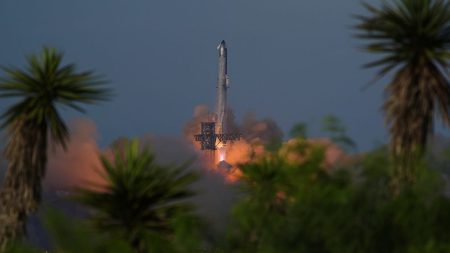A remarkable celestial event unfolded over Yakutia, Russia, when a small asteroid illuminated the night sky as it entered Earth’s atmosphere. Residents in the town of Olekminsk shared videos on social media, showcasing the asteroid’s comet-like appearance streaking across the sky. These user-generated clips were subsequently authenticated by the Associated Press, and while local officials were placed on high alert due to the asteroid’s approach, reports confirmed no damage was sustained following its descent. This incident highlights the increasingly routine nature of monitoring space phenomena, wherein swift observation and public engagement help track such occurrences.
The European Space Agency (ESA) provided crucial details regarding the asteroid, estimating its size at approximately 70 centimeters in diameter. Notably, this asteroid was discovered only about 12 hours before it entered the atmosphere, showcasing the effectiveness and timeliness of global astronomical observation efforts. The ESA’s alert system demonstrated its capability by predicting the impact of the asteroid with an impressive accuracy margin of +/- 10 seconds. This early warning reflects the advancements in space monitoring technologies, allowing agencies to prepare and inform the public regarding potential hazards posed by near-Earth objects.
Asteroids are remnants from the formation of the Solar System, occurring around 4.6 billion years ago. They vary significantly in size and are typically found in the main asteroid belt situated between Mars and Jupiter, where they orbit the Sun. While large-scale impacts are relatively rare, small and medium-sized asteroids are common occurrences. The presence of these smaller asteroids, despite their lower profile, can still pose significant risks due to their unpredictable trajectories and potential destructive capabilities upon entering Earth’s atmosphere.
Classified as near-Earth objects (NEOs), asteroids and other such natural celestial bodies that approach our planet can be tracked with increasing precision. The ESA’s Planetary Defence Office is part of the agency’s broader Space Safety Programme, which is dedicated to observing, predicting, and monitoring potentially hazardous NEOs. This initiative not only assesses the risks posed by these objects but also seeks to educate the public on the significance of space debris and asteroid awareness, emphasizing the need for further research and mitigation strategies.
The increased frequency of near-miss events and the monitoring advancements highlight the importance of continuous observation of the cosmic environment. The ability to predict and assess potential impacts showcases an evolving scientific understanding of asteroids and their trajectories. With the global network of astronomers and space agencies working collaboratively, humanity is better equipped to anticipate and respond to such events, thus contributing to public safety and scientific knowledge.
In conclusion, the event over Yakutia serves as a reminder of the dynamic nature of our solar system and the ongoing necessity for vigilant observation of near-Earth objects. As agencies like the ESA enhance their capabilities to monitor these celestial bodies, the potential for early warnings becomes more feasible, underscoring the importance of planetary defense. Learning from these events not only aids in protecting our planet but also fuels a broader understanding of the formation and behavior of asteroids, which could be invaluable for future exploratory missions beyond Earth.














